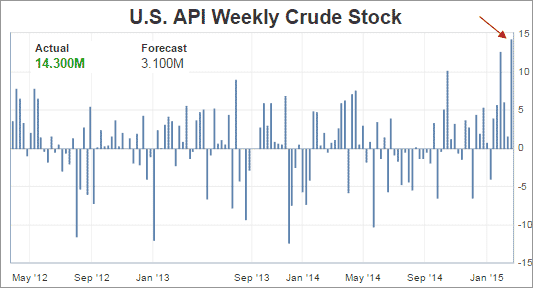More volatility could lie ahead for investors
Post on: 30 Июнь, 2015 No Comment

By John Waggoner, USA TODAY
In the end, your 401(k) holdings probably performed well this quarter. But let’s not forget the stomach-churning ride it took to get there. By any measure, stock market volatility has been galloping at dizzying speeds.
Since 1950, the Standard & Poor’s 500-stock index has posted a daily loss of more than 2% on an average of four days a year. Yet in just the past nine months, the S&P 500 has posted daily losses of more than 2% six times. Or look at it this way: The Dow Jones industrial average gained or lost more than 1% on 24 days in the third quarter the same number of times it did for all of 2006.
If you’re feeling queasy from the leaps and plunges of your 401(k) account, brace yourself. The market’s gyrations aren’t likely to slow anytime soon.
One reason: Historically speaking, volatility was unusually low from 2002 through most of 2007, says Russ Koesterich, head of investment strategy at Barclays Global Investors.
Money was cheap and plentiful, and in that type of environment, volatility is usually low, Koesterich says. The market is returning to more normal levels of volatility now.
There are plenty of factors out there to give the stock market the jitters. Start with the credit crunch, which triggered the Fed rate cuts and stirred the volatility pot. Worries about subprime mortgage defaults spread to the stock market, triggering a 3% drop in the S&P 500 on Aug. 9 and a 2.5% gain the next week, when the Federal Reserve lowered its discount rate to 5.75%.
But on Aug. 28, the market plunged 2.4% on fears that the Fed wouldn’t lower the federal funds rate. On Sept. 18, the market threw a party for the Fed’s rate-cut announcement, soaring nearly 3% its largest one-day gain all year.
Other factors that could send the stock market sharply up or down over the next few months:
The dollar. The greenback has taken a pounding on international currency markets. The trade-weighted dollar index, which measures the dollar’s value against the largest U.S. trading partners, has fallen 6.2% since June. Measured against the euro, though, the dollar has tumbled 10%. It’s now slightly weaker than the Canadian dollar for the first time since 1977.
Oil. The price of a barrel of crude oil broke above $80 for the first time, surpassing (on an inflation-adjusted basis) its peak during the 1970s.
The economy. The housing market sputtered, sparking fears that the economy could slip into a recession. And, says Sam Stovall, chief equity strategist for S&P, volatility typically remains elevated for six months after the Federal Reserve cuts interest rates.
What’s an investor to do? Here are five ways to cope with surging volatility in your 401(k) account:
1. Don’t panic.
Investors yanked $12.3 billion from stock funds in August. Believe it or not, that’s nearly always a sign that the market is about to rise. The last time funds saw a net outflow of cash was in June 2006. The Standard & Poor’s 500-stock index has gained 20% since then.
Instead, set an asset allocation a mix of stocks, bonds and money market funds that will help you sleep at night. The smaller your portion of stocks, the less volatile your portfolio is likely to be. But don’t be too cautious. The trade-off for low volatility is lower returns.
Take the Dow Jones Target 2020 index, a blend of several investment categories. Many 401(k) plans include target funds that mirror such indexes. The Dow Jones index made up of 56% stocks, 40% bonds and 4% money market securities, or cash has gained 9.5% this year. By contrast, the Dow Jones Target 2040 index, is 90% in stocks; it’s up 12.8% this year.
2. Rebalance.
One of the joys of 401(k) investing is that you can usually move money among your plan’s funds with no commissions and pay no taxes on your gains.
If you’ve created an asset allocation that suits you, review your current weightings to make sure they’re still more or less where you want them to be.
Suppose, for example, you had decided to keep your 401(k) at 75% in stocks and 25% in bonds. If your stocks have since soared to 85% of your portfolio, consider trimming your stock holdings.
Aside from reducing the risk in your portfolio, rebalancing provides another benefit: You’ll be selling shares when they’re high and buying when they’re low. Which is exactly what you want to do.
Don’t bother rebalancing after every down day in the market. But if you rebalance once your asset allocation becomes 5 percentage points or more out of balance, you can boost your returns while reducing your risk.

3. Dump your company stock.
You may be working for a swell company with great growth prospects. Still, you shouldn’t have more than 10% of your 401(k) assets invested in your company stock, particularly if you’re worried about volatility.
Why? For one thing, you’ve already invested your biggest asset you in the company. Your future earnings and, therefore, your future investments are riding on your company already.
But more important, an individual stock is, by definition, riskier than the overall market of thousands of stocks. Your company stock can, in theory, go to zero, as investors in Enron painfully discovered. Not all company stock is more volatile than, say, an S&P 500 index fund. But any one stock is riskier than a basket of stocks.
4. Kick out poor performers.
If you have the choice of several different funds in your 401(k), don’t stick with long-term losers. These funds are not only likely to deliver poor performance; they may be more volatile as well. Fund companies often measure a manager’s performance by his or her three-year record. If the fund’s performance falls consistently below that of other similar funds, the manager will likely get the boot.
You should do the same. Find your fund’s ticker symbol and go to www.morningstar.com. You’ll be able to see how well, or poorly, the fund has fared against its peers. If you have a better choice, take it.
What if your 401(k) plan offers just one or two mediocre funds? Hold your nose and stick with them. A study by Lipper, the mutual fund trackers, shows that in the long run, creating proper asset allocation is more important than magically selecting standout funds.
5. Put more money in.
Before you get too ticked off at your fund manager, bear in mind that the single biggest determinant of how much money you have at retirement is the amount you invest. Boosting your contributions by 1% or 2% of your income will do more to increase your returns than any other move you make.
How $100 a month would have fared














